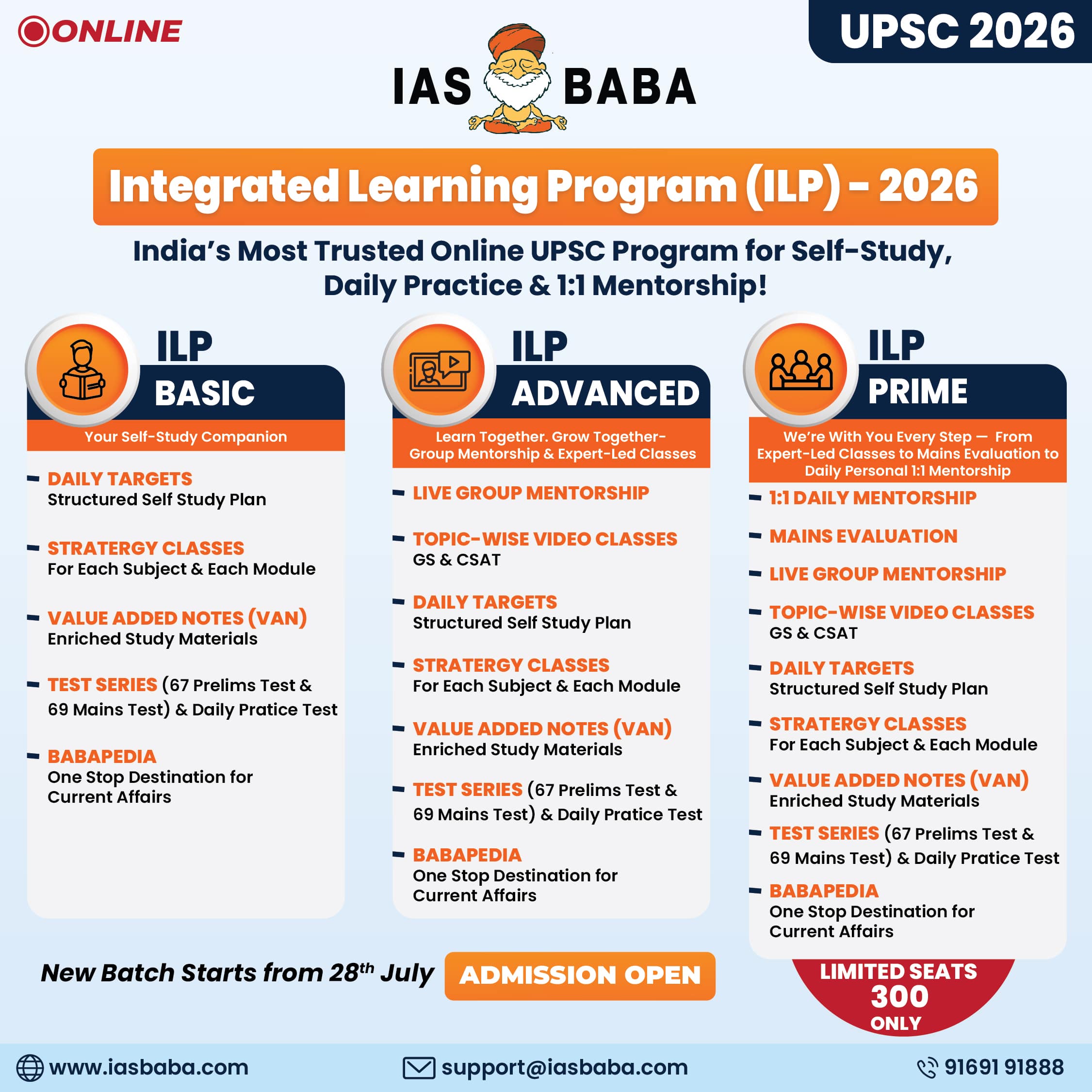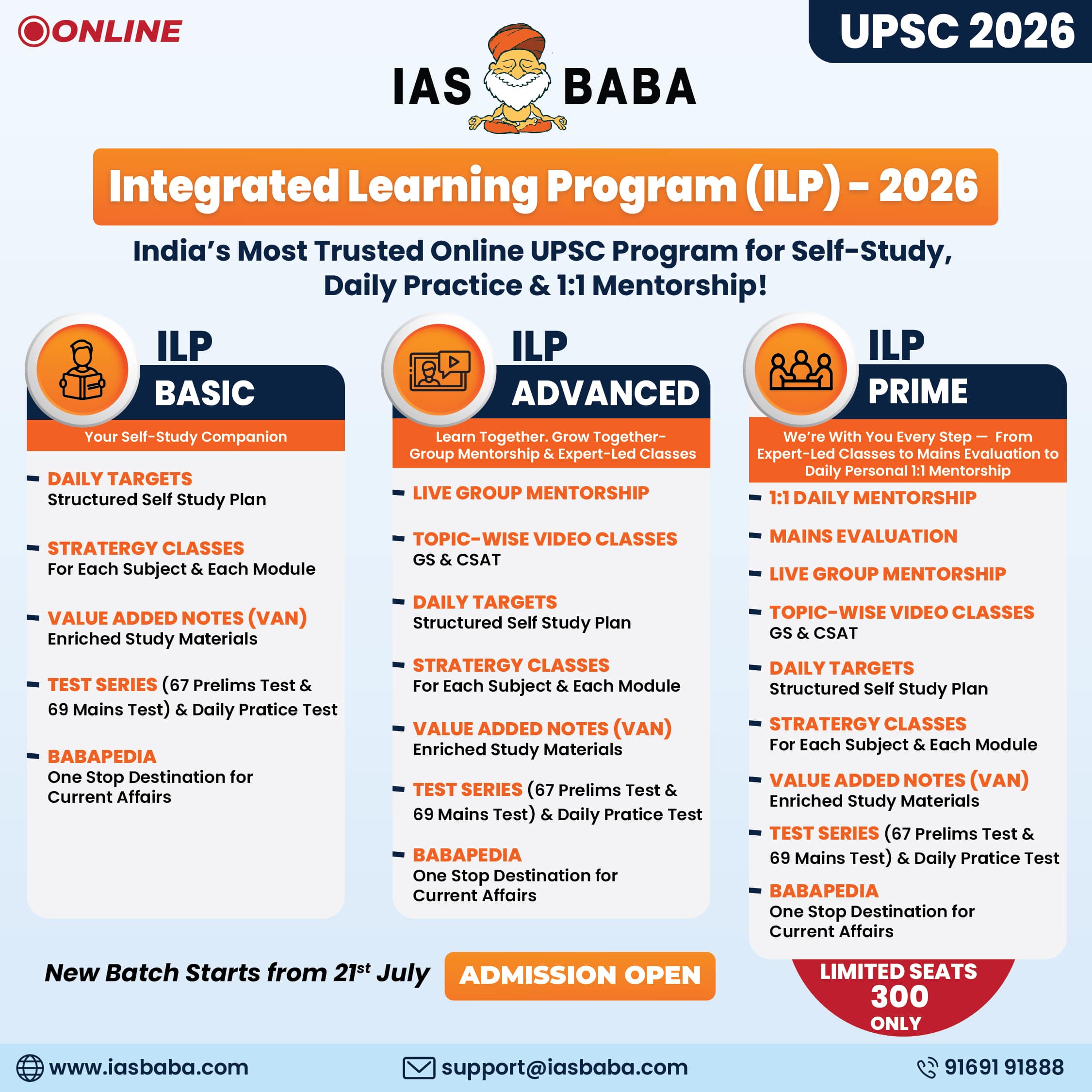IASbaba's Daily Current Affairs Analysis, IASbaba's Daily Current Affairs July 2015, International, National, UPSC
Archives
IASbaba’s Daily Current Affairs- 31th July, 2015
INTERNATIONAL
Human trafficking – A modern Slavery
- The United Nations (UN) has designated July 30 as World Day against
 Trafficking in Persons.
Trafficking in Persons. - It is a good day to remind ourselves of the plight of an estimated 2.5 million people and 1.2 million children who are victims of trafficking every year all over the world.
- With 2.5 million people a year falling victim to it, human trafficking forms a lucrative illicit economy that must be attacked from every angle
Why Human Trafficking increasing in India?
- Fundamental theory of demand and supply is applicable to this situation as well.
- Men for work generally migrate to major commercial cities and from here the demand for commercial sex is created.
- To fulfill the supply all sorts of efforts are made by the suppliers like abduction etc.
- Young girls and women belonging to poor families are at higher risk.
- Then comes the economic injustice and poverty. If you are born to a poor family in Northeastern state of India then you are at a higher risk of being sold.
- If you are born to a poor family and a girl then these chances further increases. Sometimes parents are also desperate to sell their daughters to earn money.
- Social inequality, regional gender preference, imbalance and corruption are the other leading causes of human trafficking in India.
How Is Bonded labour a major concern?
- Though debt labour is not known much but it is illegal in India and prevalent in our society.
- According to the International Labour Organization there are more than 11.7 million people working as a forced labour in the Asia-Pacific region.
- People running out of cash generally sell their kids as debt labour in exchange for cash. Both boys and girls are sold for this purpose and generally not paid for years.
- Victims of human trafficking have great chances of suffering from issues like mental disorders, depression and anxiety.
- Women forced into sexual trafficking have at higher risk of getting affected from HIV and other STDs.
What is the Action against guilty?
- Under the Immoral Trafficking Prevention Act (ITPA) trafficking for commercial sexual exploitation is penalized. The punishment ranges from seven years’ to life imprisonment.
- The Bonded Labor Abolition Act, the Child Labor Act, and the Juvenile Justice Act prohibit the bonded and forced labor in India.
- Because of the brutal gang rape of December 2012, government has passed a bill in which laws related to sexual violence and making sex trafficking have been amended.
- But still there is a huge gap between enactment and enforcement of these laws. Because of widespread corruption and bride, it is easy for agents for bring these young boys and girls for their profit.
What’s Being Done to Stop Human Trafficking?
- In general, government intervention varies—while some countries are creating policies that work for their cultures, others are lagging behind with no counter-trafficking laws at all.
- There are also some international standards: In 2003, the UN Protocol to Prevent, Suppress, and Punish Trafficking in Persons established a universal trafficking definition and set a goal for countries to prevent and combat trafficking and assist victims.
- Similarly, the U.S. Department of State’s “Trafficking in Persons Report” offers suggestions for nations to comply with the “minimum standards for the elimination of trafficking.”
IAS BABA’s View
- All the efforts will only see results through dedicated public participation. Our social conscience has to treat trafficking for what it is, a crime and an evil.
- We can, all of us, help combat trafficking. Stay vigilant and inform the authorities whenever you see a case of exploitation, do not frequent restaurants or shops that employ child labour, report homes that employ children, be sensitive towards victims of sexual abuse, and participate actively in dialogue against trafficking and slavery.
- Businesses and corporate houses must self-monitor and map their supply chain to ensure there is no trafficking or forced labour.
Connecting the Dots:
- What Measures can be taken to prevent human trafficking in India?
- Write a note on Palermo Protocol
- What was recommended in Justice Verma committee report on the Basis of BachpanBachaoAndolan(BBA) ?
NATIONAL
Defence Sector: Not in the spirit of indigenization
- The stellar achievement of the late APJ Abdul Kalam in the national security sphere was the Integrated Guided Missile Development Programme (IGMDP) responsible for the Prithvi and especially, the very advanced, highly accurate and lethal Agni series of ballistic missiles.
- Along with nuclear warheads/bombs designed and produced in Trombay, and the Advanced Technology Vehicle project that begot the Arihant-class nuclear-powered ballistic missile-firing submarine (SSBN), the IGMDP has created a paradox: India is self-sufficient in strategic armaments and long-range delivery systems but is an abject dependency with regard to conventional weaponry.
What is Integrated Guided Missile Development Programme (IGMDP)?
- What began as the modest Integrated Guided Missile Development Programme (IGMDP) in 1983, has delivered to the military a range of missiles, both strategic and tactical.
The Missiles developed under the programme were:
- Short-range surface-to-surface ballistic missile PRITHVI
- Intermediate-range surface-to-surface ballistic missile AGNI
- Short-range low-level surface-to-air missile TRISHUL
- Medium-range surface-to-air missile AKASH
- Third generation anti-tank missile NAG
The Agni, which was initially conceived as a technology demonstrator project in the form of a re-entry vehicle, was later upgraded to a ballistic missile with different ranges.
What was Dr. Kalam’s Contribution to this Indigenous Project?
- Kalam played a major role in the development and operationalization of Agni and Prithvi missiles.
- After achieving the goal of making India self-reliant in missile technology, DRDO on January 8, 2008, formally announced successful completion of IGMDP.
- The ambitious, time-bound project brought together the country’s scientific community, academic institutions, R&D Laboratories, industries and the three Services in giving shape to strategic, indigenous missile systems.
How has India pointedly steered clear of Tactical Nuclear Weapons?
- India has pointedly steered clear of Tactical Nuclear Weapons (TNW), which are smaller bombs delivered by shorter-range missiles.
- Pakistan’s nuclear deterrent relies on a TNW – called the Nasr, or the Hatf-9, with a maximum range of 60 kilometres – to counter India’s Cold Start Doctrine, which allows India to retaliate to major Pakistani provocations, like a terrorist strike or a political assassination, with punitive strikes deep into Pakistan by armoured battle groups. Pakistan hopes to deter such strikes with the threat of small TNWs.
- India, like China, believes that TNWs are inherently dangerous.
- Since they are short range battlefield weapons, they are vulnerable to theft by terrorists, or to being launched by renegade military commanders. India’s nuclear deterrent, therefore, consists of longer-range weapons that target enemy cities (i.e. counter value targeting), not military formations (counter force targeting).
What are the main factors responsible for our Missiles success?
- Firstly, this batch of young scientists came with a work culture, thought processes and confidence that they could do almost anything.
- “Secondly, Kalam unleashed thought processes and the freedom to function, thus reinforcing creativity with excellent review mechanisms.
- Thirdly, Kalam created an eco-system where DRDO laboratories worked together in clusters.
IAS BABA’s View
- This success has not come easy.
- The success of the 5000-km-range Agni V reflects India’s long-sought self-reliance in missile technology
- India has to stop mollycodding DPSUs, wasting the sophisticated built-up capacities in the private sector, and sustaining the defence industries in the US, Russia, Western Europe, and Israel by reflexively buying armaments abroad.
- Wherever we have worked without the option of import – be it on strategic missiles, nuclear weapons, atomic energy or the space programme – we have achieved self-reliance. In the super-secret world of electronic warfare, where import is not an option, we have built world-class systems.
Connecting the Dots:
- What are the Challenges that are being faced by the Defence public sector Units (DPSU ‘S?)
- What were the Technology limitations to Nag’, a ‘fire and forget’ missile?
DID YOU KNOW?
- Has your name been removed from the electoral list, denying you your right to vote? Now, you can take the Chief Electoral Officer to task for denying you your statutory right as a citizen and demand compensation for it.
- The Tamilnadu government has sanctioned 60 MLD capacity seawater reverse osmosis desalination plants, one each at Kuthiraimozhi in Ramanathapuram and Alanthalai in Tuticorin to benefit over 1,100 rural habitations where safe drinking water has been a perennial problem.
- The Reserve Bank on announced plans to put into circulation 10 rupee coins to commemorate the International Day of Yoga.














